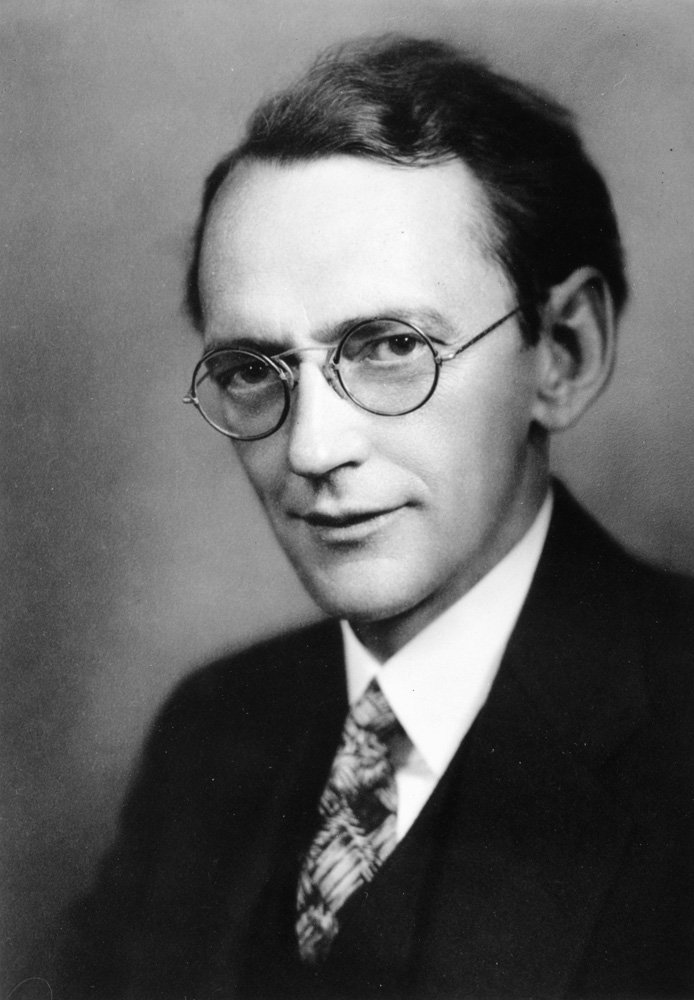The equipotentiality hypothesis is a psychological theory that has been widely discussed in both neuropsychology and behaviorism. Proposed by Karl Spencer Lashley, the theory suggests that the brain has the capacity to transfer functional memory from a damaged portion of the brain to other undamaged parts of the brain.
Lashley’s theory was based on his research on rats, where he found that the severity of cognitive dysfunction was directly related to the total amount of tissue damage. He hypothesized that memory functioning was diffusely distributed throughout the cortex rather than related to defined circuits or pathways. This led him to propose the concept of equipotentiality, which suggests that any intact part of the brain has the capacity to carry out the memory functions lost by the destruction of other parts.
The principle of equipotentiality is complementary to Lashley’s law of mass action, which states that the efficiency of learning and memory is related to the total mass of brain tissue involved. This means that the more brain tissue is involved in a particular memory function, the beter the ability to retain and recall that memory.
The equipotentiality hypothesis has been widely studied and debated in the field of neuropsychology. Some studies have supported Lashley’s hypothesis, showing that in some cases, other parts of the brain can assume the role of the damaged region. For example, studies have shown that patients who have suffered damage to the left hemisphere of the brain, which is typically associated with language processing, can sometimes recover some of their language abilities by using the right hemisphere.
However, other studies have challenged the equipotentiality hypothesis, suggesting that the brain’s ability to compensate for damage is not unlimited. For instance, studies have shown that patients who have suffered damage to the hippocampus, a crucial brain structure for memory formation, are often unable to transfer their memory functions to other parts of the brain.
Despite the ongoing debate surrounding the equipotentiality hypothesis, it remains a significant concept in the field of neuropsychology and has contributed to our understanding of how the brain processes and stores information. As research continues, we may gain a better understanding of the brain’s capacity for compensation and the limits of its ability to adapt to injury.
Examples of Equipotentiality
An example of equipotentiality is the ability of different areas of the brain to compensate for each oher in case of injury or damage. For instance, if a person suffers damage to a specific area of the brain that is typically responsible for language processing, other areas of the brain can adapt and take over this function to some extent, leading to recovery of language abilities. This concept suggests that specific functions are not localized to specific regions of the brain, but rather distributed across the brain, and that different regions can take over each other’s functions to some extent. It is important to note that this theory is still debated and not universally accepted by neuroscientists.

The Meaning of Equipotentiality
Equipotentiality is a psychological concept that refers to the ability of different parts of the brain to compensate for each other in performing certain functions, such as memory. According to the theory, any intact region of the brain can potentially take on the memory functions that are lost due to damage or destruction of other areas. This means that the brain has a level of flexibility and redundancy in its organization, allowing it to adapt to changes and maintain its ovrall functionality. The concept of equipotentiality has been studied extensively in both neuropsychology and behaviorism, providing insights into how the brain processes information and how it can recover from injury or disease.
The Theory of Cerebral Equipotentiality
The theory of cerebral equipotentiality is a principle proposed by Karl Lashley, a renowned neuroscientist, in the early 20th century. This theory suggests that the brain operates as a whole, rather than being made up of specialized regions responsible for specific functions. According to Lashley, when a particular area of the brain is damaged, oher parts of the brain can sometimes compensate for the lost function, taking over the role of the damaged region. In other words, the brain has the ability to reorganize and redistribute its functions in response to injury or damage. This principle of cerebral equipotentiality has important implications for understanding brain plasticity, neurorehabilitation, and recovery from brain injuries.
The Function of Equipotentiality
The function of equipotentiality is to suggest that the brain has the ability to transfer functional memory from a damaged area to othr undamaged areas of the brain. This theory proposes that specific areas of the brain are not solely responsible for certain functions, but rather that the brain operates as a whole. In the case of injury or damage to a particular area of the brain, the brain can compensate by transferring the functions of that area to other undamaged areas. This theory has important implications for the rehabilitation of individuals with brain injuries as it suggests that other areas of the brain can be trained to take on the functions of damaged areas.
Is Equipotentiality Real?
The concept of equipotentiality, whch suggests that all areas of the brain are equally capable of performing any mental function, was proposed in the early days of neuroscience but has since been shown to be only partially true. While it is true that some level of plasticity exists in the brain, allowing for some degree of compensation and adaptation after injury, research has demonstrated that certain areas of the brain are more specialized for specific functions than others. This specialization is known as localization of function and is supported by evidence from brain imaging studies, lesion studies, and other methods. Therefore, while the idea of equipotentiality was an important early concept in neuroscience, it is now known to be limited and not entirely accurate.

The Equipotentiality Hypothesis: Suggestions and Implications
The equipotentiality hypothesis is a theory in neuroscience that suggests that different areas of the brain have the ability to compensate for each other in performing certain functions. Specifically, it proposes that if one area of the brain is damaged or impaired, another area can take over and perform the same function. This hypothesis has important implications for understanding brain plasticity and the potential for recovery ater brain injury or damage.
In the case of the hippocampus, which is a brain region known to be involved in memory formation and storage, the equipotentiality hypothesis suggests that if it is damaged, another area of the brain may be able to compensate for its functions. This could mean that other brain regions, such as the prefrontal cortex or the parietal cortex, may take over some of the memory functions that are normally managed by the hippocampus.
However, it is important to note that the equipotentiality hypothesis is still a theoretical concept and there is ongoing debate among scientists about its validity. Some researchers argue that certain brain regions are specialized for specific functions and cannot be fully compensated for by other areas. Nonetheless, the equipotentiality hypothesis remains an important concept in neuroscience and continues to inform our understanding of brain function and plasticity.
Flouren’s Theory of Equipotentiality
Flourens’ theory of equipotentiality states that the brain functions as a whole and that each part of the brain has an equal potential to perform any function. He believed that the removal of any specific area of the brain would not result in a loss of function, as other parts of the brain would compensate for it. Flourens arrived at this theory by conducting experiments on animals where he removed anatomically defined areas of the brain and observed their behavior. He did not favour the idea of cerebral localization, which suggests that specific functions are localized in specific areas of the brain. Instead, he believed that the brain functions as a unit and that any part of the brain has the potential to perform any function. While Flourens’ theory of equipotentiality has been largely discredited today, it played a significant role in the development of neuroscience and helped to pave the way for lter ideas on cerebral localization and brain function.
The Development of Lashley’s Equipotentiality Hypothesis
Lashley developed the equipotentiality hypothesis through a series of experiments involving rats and their ability to navigate through a maze. He first trained the rats in the correct route through the maze, ensuring that they were able to complete it successfully. He then deliberately damaged certain areas of their brains and observed their behavior in attempting to navigate the maze again. To his surprise, Lashley found that the rats were still able to successfully complete the maze, despite the brain damage. This led him to theorize that the brain operates as a whole, rather than specific areas bing solely responsible for certain functions. This idea became known as the equipotentiality hypothesis, which suggests that different areas of the brain can compensate for each other in performing certain tasks. Lashley’s experiments paved the way for a new understanding of brain function and the concept of neural plasticity.
Equipotentiality in Family Therapy
Equipotentiality is a concept in family therapy that suggests that one particular issue or problem within a family system can have multiple outcomes or solutions. This means that there are various ways in wich a family can approach and resolve a particular issue, and no one solution is necessarily better than the others. Essentially, equipotentiality asserts that there is no one “right” way to address a problem within a family, and it is up to the family members themselves to determine the best course of action. This concept emphasizes the importance of collaboration and communication within the family, as well as the need for therapists to remain open-minded and non-judgmental when working with families. By recognizing the idea of equipotentiality, therapists can help families explore a range of options and ultimately find the solution that works best for them.

The Theory of Cerebral Equipotentiality and Its Pioneer in the Cognitive Revolution
The theory of cerebral equipotentiality proposes that basic motor and sensory functions are localised in specific areas of the brain, but higher mental functions are not. This means that intact areas of the brain can take over responsibility for specific cognitive functions following brain injury. In other words, the brain has the ability to reorganise and compensate for damage.
George Lashley, a pioneer of the cognitive revolution, was a proponent of the theory of cerebral equipotentiality. He believed that the brain is not a collection of independent functional units, but rather a highly interconnected system that can adapt and compensate for damage. Lashley’s theory challenged the prevailing belief of strict localisation of brain function, whih had been the dominant view in neuroscience for many years.
The theory of cerebral equipotentiality suggests that the brain has a remarkable ability to adapt and recover from injury, and that higher mental functions are not necessarily tied to specific areas of the brain.
Flourens’ Theory of Equipotentiality
Flourens was a French physiologist who conducted experiments on animals to localize certain functions of the brain. His work involved removing anatomically defined areas of the brain and observing the behavior of the animal. However, he did not favor the idea of cerebral localization, which was gaining popularity at the time. Instead, Flourens proposed the theory of “cerebral equipotentiality,” which suggests that the brain functions as a whole rather than having specific areas responsible for certain functions.
Flourens believed that the brain was not divided into distinct regions, but rather each part of the brain was capable of performing any function necessary for the animal’s survival. This theory was based on his observations that animals were still able to perform certain tasks even afer certain parts of the brain were removed. For example, Flourens found that birds could still fly and maintain their balance even after their cerebellum, which is responsible for coordination and balance, was removed.
Flourens developed the theory of cerebral equipotentiality after conducting experiments on animals that showed that the brain was not divided into distinct regions but rather functioned as a whole. This theory challenged the popular concept of cerebral localization and had a significant impact on the field of neuroscience.
Karl Lashley’s Contributions to Psychology
Karl Lashley is known for his significant contributions to the field of psychology, specifically in the areas of learning and memory. He was a behaviorist who conducted various experiments to study the neural basis of behavior and cognition. Lashley is famous for his theory of “mass action” which suggests that the brain functions as a whole, rther than being localized to specific regions. He conducted experiments on rats to study the effects of brain lesions on learning and memory, and his findings led to the conclusion that memory is distributed throughout the brain, rather than being localized to a specific area. Lashley’s research also contributed to the development of the field of neuropsychology, as well as the understanding of brain plasticity. Karl Lashley is remembered as a pioneering psychologist who made significant contributions to the study of learning and memory, and his work continues to influence the field of psychology today.

Main Equipotential Bonding: An Overview
Main equipotential bonding (MEB) is a crucial electrical safety measure that ensures all exposed conductive parts of an electrical installation, such as metal pipes, fittings, and appliances, are connected to the main earthing terminal. The purpose of MEB is to maintain the same potential across all exposed conductive parts to prevent electric shock and reduce the risk of fire.
MEB is essential in buildings with multiple electrical systems, such as medical facilities and factories, where different electrical systems may have different earth potentials. In such cases, MEB ensures that all the earth potentials are connected to each other, reducing the risk of electric shock and equipment damage.
MEB is achieved by using a thick copper conductor connected to the main earth terminal, which is then connected to all the exposed conductive parts of the electrical installation. The size of the conductor depends on the size of the installation and the amount of current expected to flow thrugh it.
MEB is a critical electrical safety measure that ensures all exposed conductive parts of an electrical installation are connected to the main earthing terminal, maintaining the same potential across all parts and reducing the risk of electric shock and equipment damage.
Exploring the Localization Theory
The localization theory is a concept in neuroscience that suggests that specific functions of the brain are localized to specific areas of the cerebral cortex. This theory postulates that different regions of the brain are responsible for different sensory and cognitive processes, such as vision, language, and motor control. The idea of cortical localization was first proposed in the mid-1700s, but it was not untl the early 1800s that it became a central topic of study by Franz Gall. The theory of cortical localization of function has had a significant impact on our understanding of the brain and has guided research in neuroscience for centuries. Through this theory, scientists have been able to identify specific brain regions involved in various functions, leading to advances in the diagnosis and treatment of neurological disorders.
Conclusion
The equipotentiality hypothesis suggests that memory function is not localized to specific regions of the brain, but rather distributed throughout the cortex. It proposes that in the event of brain damage, other undamaged parts of the brain have the potential to take on the functions of the damaged region. This theory has important implications for the understanding of brain plasticity and rehabilitation following brain injury. While equipotentiality has been challenged by more recent research, it remains an important concept in the history of neuropsychology and continues to inspire new investigations into the complex mechanisms underlying brain function and recovery.
